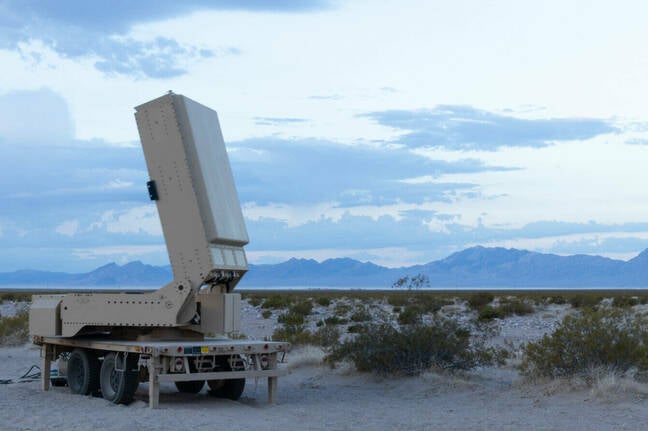The US Army has taken delivery of its first drone-cooking weapon designed to knock unmanned aerial systems (UAS) out of the air using high-powered microwave beams.
We’re told this hardware, developed by defense contractor Epirus, can even take care of entire drone swarms.
With this gear in hand, the Army’s Rapid Capabilities and Critical Technologies Office (RCCTO) now has its first Indirect Fire Protection Capability – High-Power Microwave (IFPC-HPM) machine to protect military assets from cheap, readily available drones.
As has been the case in Ukraine since Russia invaded last year, drones are being fielded by both sides in large numbers to devastating effect. While the US Army is not directly engaged in ground conflicts where drones are a serious threat, things are unlikely to stay that way for long, making developing a system able to deal with individual and swarm drones an essential part of future warfare, it’s felt.
The system delivered to the Army is a version of Epirus’ Leonidas counter-UAS microwave devices, variations of which can be a stationary point-defense system or mounted to a vehicle to be used on the move.

The US Army’s new prototype Indirect Fire Protection Capability – High-Power Microwave – Click to enlarge. Source: Epirus
“Leonidas counter-electronics system demonstrated lethality against a broad range of UAS and electronic systems and achieved swarm defeat at multiple US government-sponsored test events, outperforming six down-selected systems,” the manufacturer said in January when announcing its $66.1 million supply contract with the US Army.
As is expected with a high-powered microwave, Leonidas fries the electronics on its remote targets for a claimed instant kill. More specifically, the electronic components overheat and fail when hit by the high-powered microwave energy, causing the craft to crash into the ground.
“When Leonidas puts effects on a drone, for example, it drops out of the sky and is rendered useless,” an Epirus representative told us.
Leonidas is mounted on a 360-degree gimbal allowing it to rotate to face targets, and “enables upgradable lethality through simple software-based updates to deployed systems.” It can be tuned to fire a narrower beam targeting a single large drone, or widened to blast swarms out of the air, it’s claimed.
In addition, the system was designed with an open architecture to make it easier for the military to integrate it with future command and control networks, or so it’s hoped.
Epirus also touts Leonidas as safe for human operators with a relatively low operational voltage and a “lack of ionizing radiation” that makes it “safe for both people and friendly assets.” It’s also designed to be modular, with Line-Replaceable Amplifier Modules being the core component of the HPM, making quick equipment modifications in the field easier for soldiers who may not be qualified engineers.
As is often the case with these sorts of cutting-edge military devices, available details about the device’s function are limited, and Epirus told us it couldn’t share things like the maximum range of a military IFPC-HPM. Nonetheless, we’re told the DoD has confirmed that the system can take out targets “at a tactically relevant range,” an Epirus spokesperson told The Register.
Behold this drone-dropping rifle with two-mile range
Lockheed Martin demos 50kW anti-aircraft frickin’ laser beam
An anti-drone system that sneezes targets to death? Would that be a DARPA project? You betcha
Swiss drone-busting eagle squadron grounded permanently
So, how soon could an IFPC-HPM be spotted in the field?
“The first IFPC-HPM system has been delivered in just nine months from contract kickoff. The second system will be delivered by end of this year and we’re on track to deliver the full platoon of four IFPC-HPM systems to RCCTO in early calendar year 2024,” Epirus told us.
From there it’s more testing and figuring out how to integrate such systems into the Army’s field units. Even then, the current contract isn’t for field-ready devices. “As part of the contract’s design, work with the RCCTO to transition Leonidas into a future program of record after successful demonstration of the prototypes,” Epirus said.
In other words, it might take a while for the Army’s IFPC-HPM to see real-world action and for now is undergoing trials – or “further evaluation and testing to develop tactics, techniques, and procedures for future use,” as the weapon’s maker put it.
Whether it could be fielded in Ukraine also isn’t on the table right now, as Epirus tells us it doesn’t currently have any international customers. ®
>>> Read full article>>>
Copyright for syndicated content belongs to the linked Source : The Register – https://go.theregister.com/feed/www.theregister.com/2023/11/03/microwave_anti_drone/




























